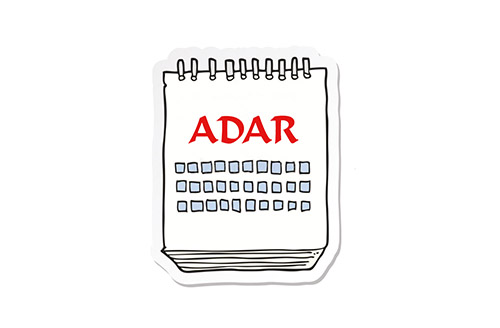
Judaism connects Passover with spring, as follows: “Observe the month of Abib and offer a Passover sacrifice to the Lord your God, for it was in the month of Abib, at night, that the Lord your God freed you from Egypt” (Deut. 16.1). Because the word “Abib” is used in scripture to describe the ripening of the barley crop (see Exodus 9.31, which speaks of the hail plague as destroying the barley crop because the barley was “Abib”—“in the ear”), and because barley ripens in the spring, it is clear that Passover is to be observed in the spring (no surprise to modern Hebrew speakers, as “Aviv” means “spring” in Hebrew). Just how to ensure that Passover is in the spring is mentioned in the Talmud, which speaks about tinkering with the month of Adar with this end in mind (see Tractate Sanhedrin 13.b). In practice Adars are doubled, and so Jewish leap years have 13 months, the last two being Adar I and Adar II.
There are about 354-and-a-third days in a lunar year and about 365-and-a-quarter days in a solar year. As is well known, every four years we add one extra day at the end of February and in that way we maintain solar calendrical order. What is the timing concerning Jewish leap years, given the wish to have Passover in the spring?
A key calculation is to note that each solar year contains approximately 12.37 lunar months. If you do the math, the first time that figure becomes (almost) a whole number (235) is when you multiply it by 19, i.e., 19 solar years equals 235 lunar months. Now if I can trouble you for just one more calculation, you will note that 19 multiplied by 12 (the number of months in a regular year) yields just 228 months. It thus developed that the Jewish calendar is designed on a 19-year cycle with seven lunar leap months (to have the lunar calendar add up to 235 months—whoops, I snuck in one more calculation but then again it was just simple addition), and this will keep the solar and lunar calendars from drifting too far apart. The practice evolved in Judaism for the leap years to occur in the third, sixth, eighth, 11th, 14th, 17th and 19th years of the cycle. We are currently in the sixth year of a cycle; hence this Jewish year of 5782 is a leap year.
While only a minority of Israelis would be able to tell you when the leap month of Adar II begins (this year, on March 4), a leap year very much affects Israeli society, as it causes a month-long delay of the Purim holiday (which is celebrated in Adar II) and likewise of the three-week spring holiday period: Passover, followed the next week by Holocaust Remembrance Day, followed the next week by Israeli Memorial and Independence Days. Israelis are thus always wondering about when their holidays will fall out in a given year, eyeing with envy Americans and their holidays, such as the Fourth of July.
During leap years, the traditional liturgy inserts a phrase into the “Additional” New Moon Service that speaks about the year as one of atonement for sin, and so my friends, here’s wishing you all a clean slate as we head into Adar II.
By Teddy Weinberger










